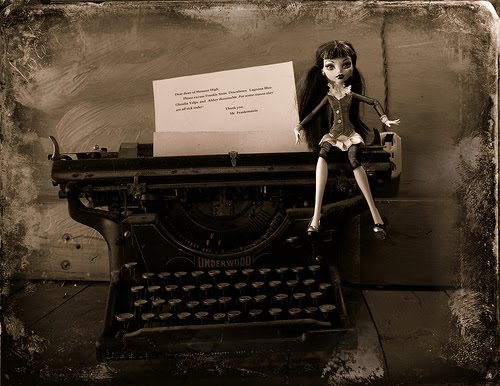Did you know Dean Koontz wrote a book on how to write genre fiction?
Actually, he wrote two books. One, published in 1972, was called Writing Popular Fiction and one, published in 1981, was called How To Write Best Selling Fiction. Both are out of print but I was able to borrow a copy of Writing Popular Fiction from a friend.
Five Essential Elements Of Genre/Category Fiction
Dean Koontz holds that there are five essential differences between genre and mainstream fiction.
1. A Strong Plot
Here's the formula:
[T]he hero (or heroine) has a serious problem; he attempts to solve it but plunges deeper into danger; his stumbling blocks, growing logically from his efforts to find a solution, become increasingly monumental; at last, forced by the harsh circumstances to learn something about himself or the world around him, to learn a Truth of which he was previously unaware, he solves his problem—or loses magnificently.That more-or-less sums up the hero's journey.
I find it interesting that James Frey said more or less the same thing in his book, "How To Write A Damn Good Novel". He writes:
[A dramatic novel] focuses on a central character, the protagonist, who is faced with a dilemma; the dilemma develops into a crisis; the crisis builds through a series of complications to a climax; in the climax the crisis is resolved. Novels such as Ernest Hemingway's The Old Man and the Sea, John Le Carre's The Spy Who Came in from the Cold . . . are all written in the dramatic form and are all damn good novels.
2. A Vivid Protagonist Readers Can Relate To
Dean Kootz stresses that readers of genre fiction want to escape their lives, for a few hours they want to trade their existence for one that is more exciting. They don't want to read about someone trying and failing.
James Frey agrees and writes that "readers wish to read about the exceptional rather than the mundane". Your characters need to be "more handsome or ugly, ruthless or noble, vengeful or forgiving, brave or cowardly, and so on, than real people are."
A protagonist in a genre novel has ...
... hotter passions and colder anger; he travels more, fights more, loves more, changes more, has more sex. Lots more sex. Homo fictus has more of everything. Even if he is plain, dull, and boring, he'll be more extraordinary in his plainness, dullness, and boringness than his real-life counterparts.
3. Both Protagonist And Antagonist Must Have Clear, Believable, Motivations
I've written quite a bit lately about this point so I won't belabor it here. Point of view (POV) characters need clear goals. And the stakes (what happens if the character achieves her goal or not) they are playing for have to be crystal clear as well.
But there's something else, there's the question of motivation. Why does your character care about those goals? Why does he care about those stakes? Here we are talking about inner motivations.
Dean Koontz believes that all character motivation can be made to fit one of the following 7 categories:
- Love
- Curiosity
- Self-preservation
- Greed
- Self-discovery
- Duty
- Revenge
(I think one could also add: ambition and fear. I would slot 'conscience' in with Duty, above.)
Dean Kootz writes that two or more of these motivations must be present in any character for the result to be believable. For instance, Gothic heroines are often motivated by curiosity, love, and self-preservation.
He also cautions that a character should not be motivated by anything at odds with his basic personality. For instance, it would be difficult to imagine any of Tom Hanks' characters being motivated by greed for power or greed for wealth.
4. Lots Of Action
Whenever I think about an action movie I think of Indiana Jones in one of the first three movies of that series. Indie did a lot of running from bad guys, a lot of chasing bad guys and a LOT of fighting bad guys--and it was great!--but, as Dean Koontz points out, that's not the only kind of action.
- Movement from place to place
- Confrontations between characters
- A conflict of inner motivations
Dean Koontz writes:
The hero and heroine must constantly be engaged in conquering some barrier that grows logically from their own actions in trying to solve their major predicament.
5. A Colorful Background
Even if your characters aren't romping around the Bahamas, it's important you create a "stage on which hotels, houses, streets, and people are uniquely painted". This also helps create suspension of disbelief.
That's it! I think that sometime soonish I want to talk about James Frey's book, How To Write A Damn Good Novel. It has a lot of great advice in it.
How do you think genre novels differ from the mainstream? DO you think they differ? Ursula K. Le Guin doesn't feel there is a useful distinction to be made.
Other articles you might like:
- How Plotting Can Build A Better Story- Building Character: The Importance Of Imperfection
- Ernest Hemingway And The Purpose Of Writing
Photo credit: "high 1" by monster 777 under Creative Commons Attribution 2.0.










